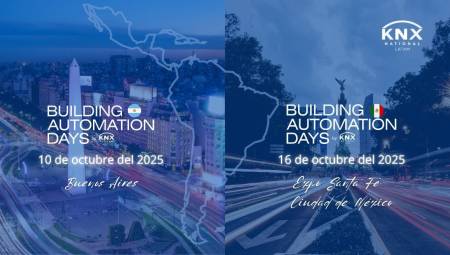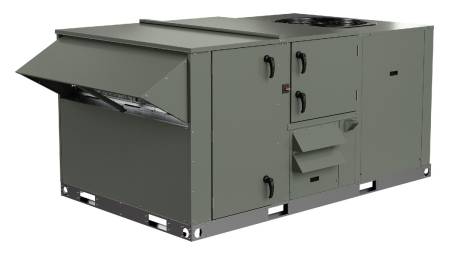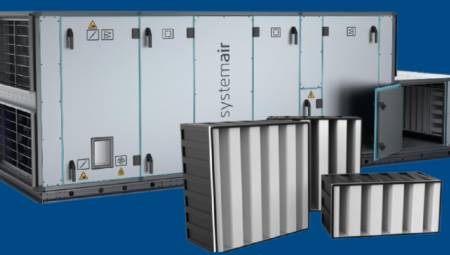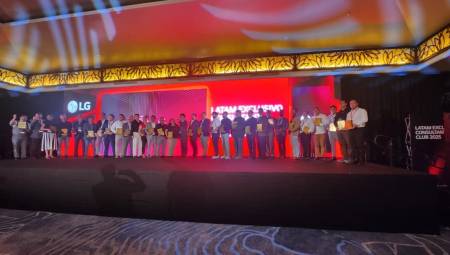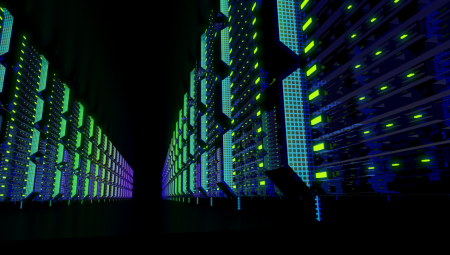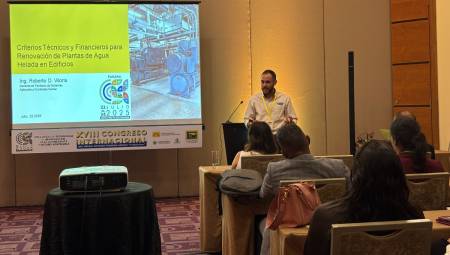How to successfully integrate building systems
 "I've lost over nine thousand pitches in my career. I've lost almost 300 games. 26 times I have trusted that I will make the winning launch of the game and I have lost. I have failed again and again in my life. That's why I've been successful." Michael Jordan, six NBA Championships.
"I've lost over nine thousand pitches in my career. I've lost almost 300 games. 26 times I have trusted that I will make the winning launch of the game and I have lost. I have failed again and again in my life. That's why I've been successful." Michael Jordan, six NBA Championships.
By: Jim Sinopoli**
Many building owners and people in the industry believe that the concept of integrated building systems is persuasive and intuitive. However, they are reluctant to switch from concept to actual deployment. Here we present the ten elements necessary for a successful installation of integrated building systems.
Some are simply good business or project management practices, but unfortunately none compete in humor with David Letterman's ranking on his show.
1. Understand the building owner's business
Integrating building systems is not a "fit all" issue. There are different types of facilities and widely varying business objectives for private and public sector building owners. Integrated systems for a mixed-use project, for a developer or owner, is significantly different from that of a government hospital with 500 beds.
Since the technology is simply used for other business purposes, it is the building owner's business leaders who pave the way for successful integration of the building's technology systems.
Discussion with an owner in this regard relates to how building technology systems can affect capital and operating costs, generate revenue, improve the experience or operation of building occupants, optimize building operation, and possibly differentiate the facility. Such a discussion is the programming or the basis on which progress must be made.
2. Have prompt participation in the project
Discussion and purchases from the owner have to be done promptly on the project. The later it arrives in programming, the less likely it is to be adopted, and if it does, it is unlikely to be successful.
Being late to the process also implies that it can be more "harmful", because some decisions have already been made and the designs have already been developed by the rest of the project team, specifically the architect and civil engineers and by the MEP (Master in Physical Engineering). It is also detrimental if it has budgetary implications that were not initially planned. The chances of success depend on the early arrival to the project.
3. Set real expectations with the owner
Engage with the owner. Be cautious with the "futures" or "trends" of technology and deal only with what can be achieved with what exists today. Show the owner any potential implementation issues and any necessary changes in the management of the building. Set expectations with the owner that can be met or even exceeded, in order to have a successful project.
4. Clearly define the roles of the "traditional" project designers involved in the project
The conventional way to design building technology systems is to do it in "design silos." Old methods of design and contracting do not work for integrated or converged systems. Success involves an effort with the owner, the owner's facilities or the property manager, the architect, the mechanical engineer, the electrical engineer, the project team consultants for IT, security and audiovisual, the construction manager and the contractors, to "change a little" the design and installation process.
Keep in mind that some may resist doing things in a different way. Clearly identify who is designing and installing what things, and who will ultimately be responsible for the design and installation of the integrated system.
5. Detail the scope. Clearly identify the systems involved in the process
Specify which systems will be involved in the process. And better yet, develop an array of all related systems and determine which systems will be integrated.
Identify which systems will be integrated at a physical level (cables, equipment rooms, etc.), at a logical level (e.g., similar protocols), and at a functional level. For example, the fire alarm will be integrated into access control and video surveillance, or the audio-visual system will be integrated with light controls and HVAC management. Or, all systems will be integrated into a primary cable system. Change the trivialities of "integrated systems" and "open up" to the expected reality.
6. Establish the technical basis and operational functions of systems to guide their design
Identify common elements of systems that are necessary for integration, that may represent cost savings, or that improve building operation. These can be common cable types, a reduced set of permitted communications protocols, open systems databases, web-browser management tools, Common equipment labeling schemes, software integration, etc. Standardize, simplify, and find what is common across systems. Establish the technical foundation to guide contractors.
7. Solve any obstacles that may arise between the people involved in the management of the facilities, security and information technology
Integrated systems have their effect on the organizations they support and are responsible for those systems. The functions of organizations change slightly, the different skills of the required staff may change, and there may be budgetary implications. Help the owner respond to these changes so they can identify better operational efficiencies and cost effectiveness in organizations.
8. Provide cost calculations for the project and update cost estimates on a regular basis
After you present a likely upfront cost of embedded systems, proceed with updating costs based on market conditions or design changes. Avoid any surprises for the owner. Likewise, prioritize the topics included in the installation in the preparation of the discussion on "value engineering" that may arise at some point in the project.
9. Understand and follow the general program of the project and its sequence of activities
There are large teams of people involved in the design and construction of a building. Building systems are a small part of the project, although important for the operation and occupation of the property. The design and installation of such systems should follow a general agenda and are independent of the different activities carried out by others outside the smaller group of the integrated system.
Here are some elements that will be specified and installed by others on which integrated building systems can depend: such as space, piping, cable boxes, power, grounding, air conditioning, door hardware , and furniture. Coordinate and follow the program sequence for integrated systems with the necessary items for proper installation.
10. Present the plan. Diligently handle the details of system installation and operation
The best system design plans and specifications fall apart if the systems are not installed properly or if they are not installed to specification. Handle the details: Continuously observe the installation. Inspection, inspection and inspection. Again, work with others as a team to ensure the success of the project.
* This article was originally published on the automatedbuildings.com portal (www.automatedbuildings.com/resources/links.htm ) **For more information on smart buildings, technology design or to establish a Continuing Education program for your office, write to me at: [email protected].


